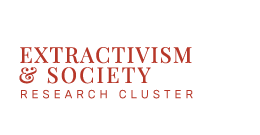Screening of la the Daughter of the Lake (La Hija de la Laguna)
We organized the screening of the Daughter of the Lake (La Hija de la Laguna) on Feb 5th, 2020, followed by a Q&A with the director Ernesto Cabellos and the indigenous protagonist Nélida Ayay. We had more than 20 participants between grad students, undergraduate, and faculty from ENVS and LALS departments. This was a great opportunity to bridge two interdisciplinary departments that have so much in common and explore possibilities for further collaborations.
Moreover, the event gave us the opportunity to establish a conversation around extractivism and social movement resistance against transnational corporations that threaten human and environmental rights. The viewing and subsequent conversation highlighted the power of art, media and storytelling to bridge academic analyses and social activism. It also demonstrated the importance of intercultural dialogue to better understand the diverse lived experiences, ideologies, and interests that shape complex socio-environmental conflicts.
More information about the documentary:
‘Hija de la laguna’ responds to the Andean gold rush, tracking its impact on the environment and indigenous communities. It shows how proliferating, poorly regulated mining operations have adversely affected rural communities’ access to water, disrupted the ecosystem, and altered soil conditions, making sustainable farming increasingly untenable.
‘In his fourth feature-length documentary, director Tito Cabellos tells the story of Perú’s extractivist economy chiefly through the eyes of Nélida Ayay Chilón, indigenous women. She is the titular daughter whose neighboring lake is threatened by the discovery of gold deposits. The documentary opens with Nélida visiting the lake, and asking where its duende, or spirit, will go if the Yanacocha mining company drains the lake to extract the minerals beneath. This opening sequence foregrounds Nélida’s point of view, and didactically introduces Western viewers to indigenous worldviews, which attribute personhood (or souls) to all living beings, both human and nonhuman’. (Documenting Extraction in ‘La hija de la laguna’ By Carolyn Fornoff)

